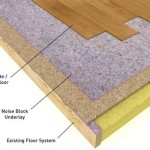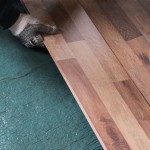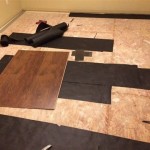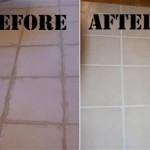Essential Aspects of Installing Vinyl Flooring on Concrete
Vinyl flooring has become increasingly popular due to its durability, versatility, and affordability. If you're considering installing vinyl flooring on concrete in your home, it's crucial to understand the essential aspects of this process. ### Preparing the Concrete Subfloor 1.Moisture Test:
Ensure the concrete subfloor is dry by conducting a moisture test. Use a hygrometer or moisture meter to check moisture levels. The concrete should have a moisture content below 2.5% for optimal performance. 2.Leveling and Smoothing:
Concrete surfaces should be level and smooth to provide a proper base for vinyl flooring. Use a level to check for uneven areas or bumps and address them using a concrete grinder or self-leveling compound. 3.Cleaning:
Remove all dirt, dust, and debris from the concrete surface. Vacuum and mop the floor thoroughly to ensure a clean and adhesive-ready surface. ### Choosing the Right Vinyl Flooring 1.Material:
Vinyl flooring comes in different materials, including sheet vinyl, vinyl tiles, and luxury vinyl planks (LVP). Choose the option that best suits your design preference, durability needs, and budget. 2.Thickness:
The thickness of vinyl flooring ranges from 2mm to 8mm. Thicker flooring generally provides more durability and comfort. 3.Wear Layer:
The wear layer determines the resistance to scratches and wear. Choose a wear layer appropriate for the traffic and use of the room. ### Installing Vinyl Flooring 1.Layout and Cutting:
Plan the layout of the vinyl flooring to minimize waste and avoid seams in high-traffic areas. Mark the cutting lines carefully and use a sharp utility knife to cut the planks or sheets. 2.Adhesive:
Use a high-quality adhesive specifically designed for vinyl flooring on concrete. Apply the adhesive according to the manufacturer's instructions, evenly spreading it over the concrete surface. 3.Installation:
Install the vinyl flooring planks or sheets, starting from a corner of the room. Align the pieces precisely and press them firmly into the adhesive. Use a roller or hand-tamper to ensure proper adhesion. 4.Seams:
If necessary, use a hot-air welding machine or seam sealer to seal the seams between planks or sheets. This creates a watertight and durable bond. ### Maintenance and Care 1.Cleaning:
Vinyl flooring is easy to clean. Use a damp mop or microfiber cloth with a mild cleaning solution. Avoid using harsh chemicals or abrasive materials. 2.Protection:
Place mats or rugs in high-traffic areas to protect the floor from scratches and wear. 3.Repair:
Minor scratches or damages can be repaired using a vinyl patch or repair kit. For major repairs, consult a professional flooring contractor. ### Conclusion Installing vinyl flooring on concrete requires careful preparation, material selection, and proper installation techniques. By following these essential aspects, you can ensure a durable, stylish, and low-maintenance flooring that enhances the beauty and functionality of your home for years to come.
How To Prepare A Concrete Floor For Vinyl Flooring Parrys

Tips For Installing Vinyl Plank Over Concrete Floors Lemon Thistle

Easy Ways To Install Vinyl Plank Flooring On Concrete

Vinyl Plank Flooring On Uneven Concrete

How To Install Vinyl Plank Flooring On Concrete Step By Guide

How To Lay Vinyl Sheet Flooring On Concrete

How To Install L And Stick Vinyl Tile On Concrete Floor Self Installation

Concrete Subfloor Preparation For The Vinyl Floor Installation How To Diy Mryoucandoityourself

Best How To Install Vinyl Plank Flooring Four Generations One Roof

How To Install Vinyl Flooring On Concrete Floor Ers
See Also







